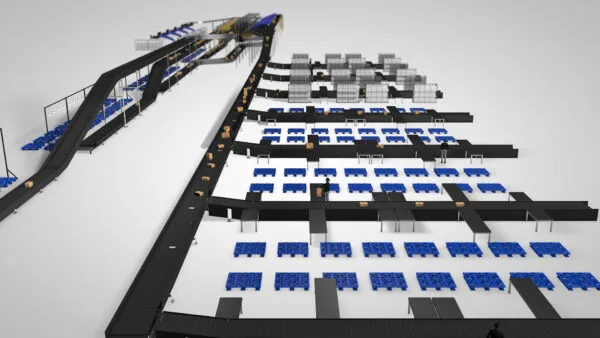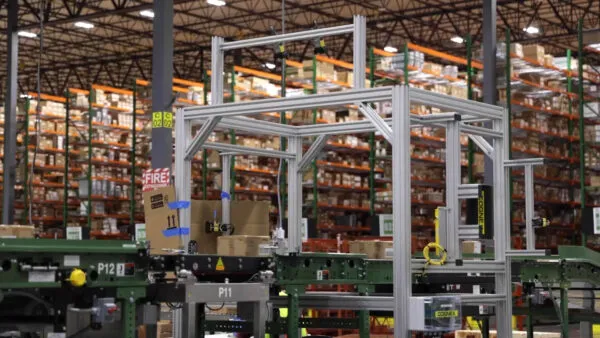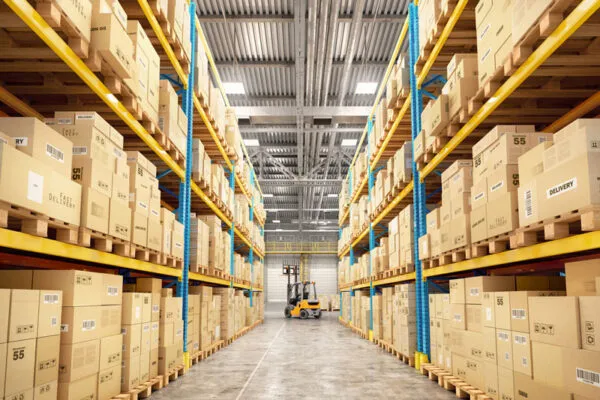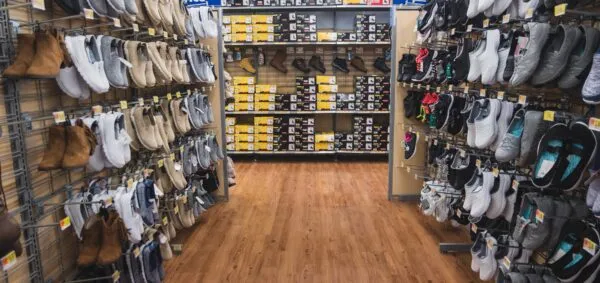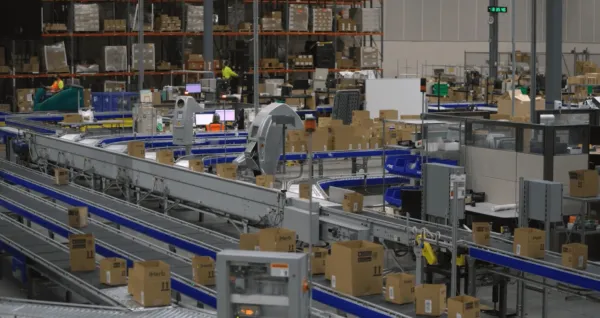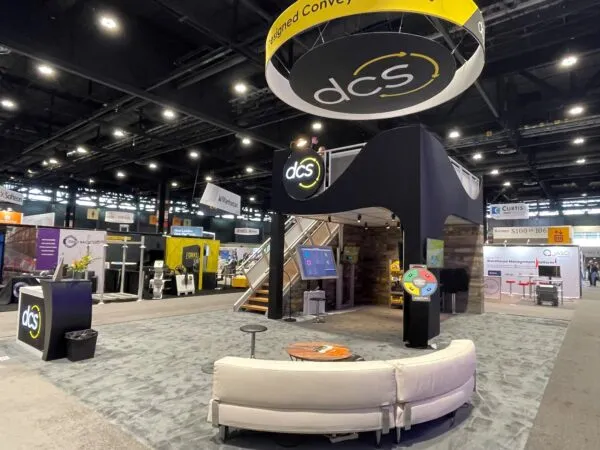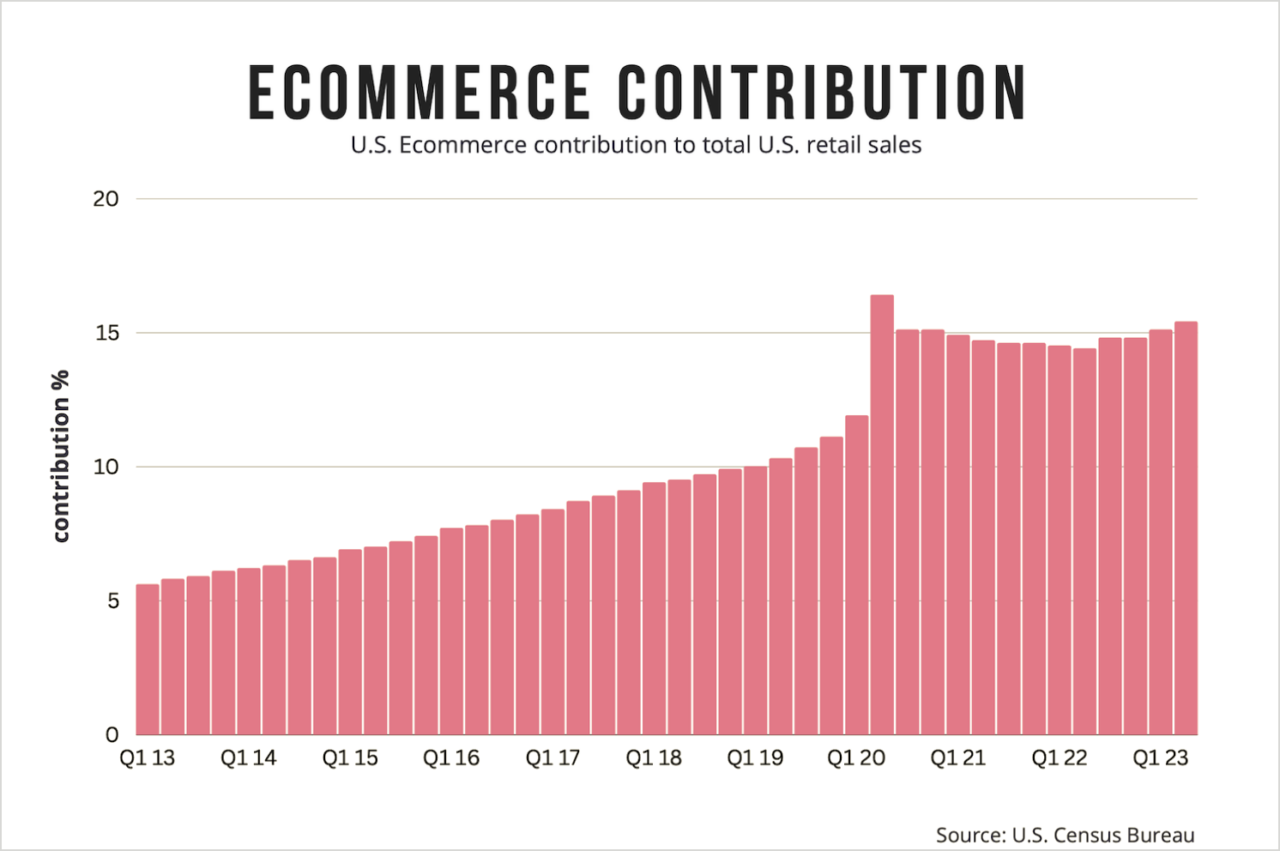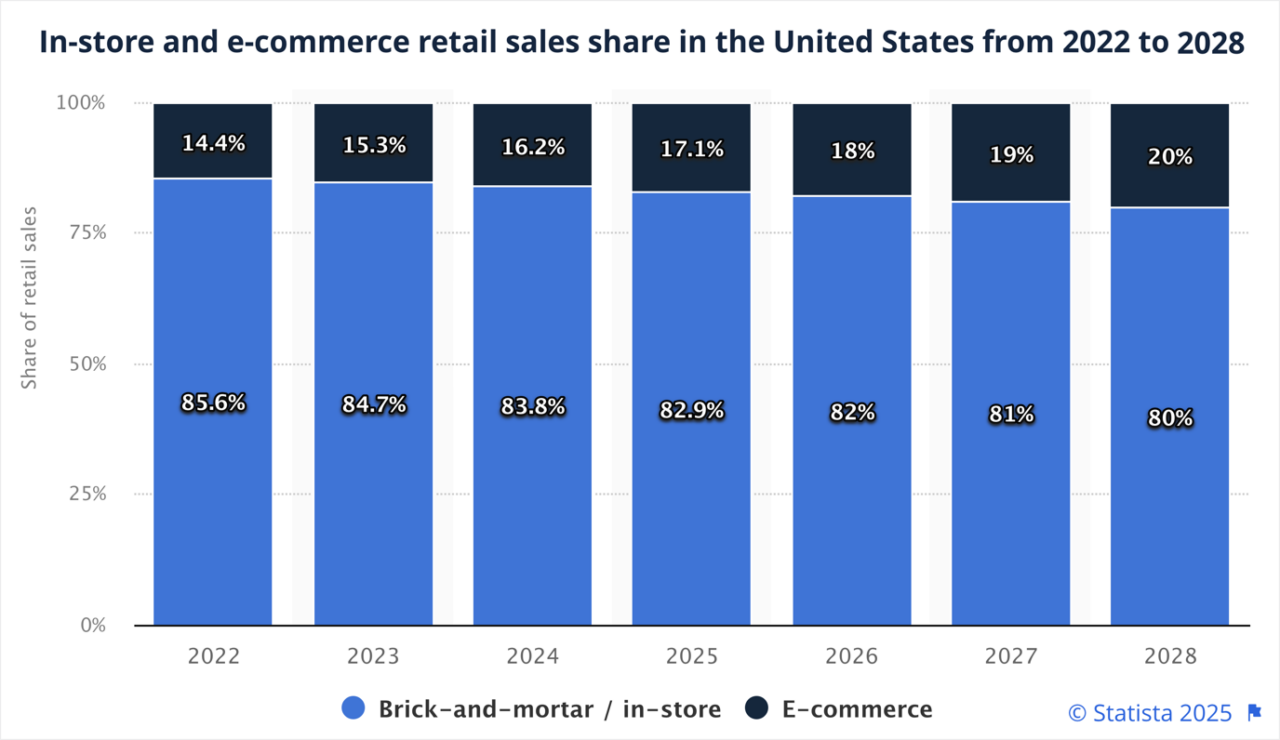This site is protected by reCAPTCHA and the Google Privacy Policy and Terms of Service apply.
PART 1: The Retailer’s Guide to Efficient and Effective Distribution Network Optimization

What is Distribution Network Optimization?
Retail distribution involves multiple platforms and channels, including brick-and-mortar stores, online platforms, print catalogs, and more. Some operations ship goods directly from a distribution center (DC) to the consumer. Others replenish stores. And still others do both. Regardless, inventory passes through multiple steps within a retail distribution network prior to reaching its final destination.
To improve the efficiency of product flow customers, retailers can undertake a distribution network optimization process. This supply chain distribution network optimization can be conducted in-house or with the engagement of a consulting partner. The process analyzes and optimizes warehouse locations, inventory levels, transportation routes, and fulfillment methods. The objective is to minimize costs, reduce delivery times, and enhance customer satisfaction.
Distribution network optimization has become a critical endeavor over the last two decades as operating a retail business has become exceptionally complex. Driven by new channels, such as e-commerce and mobile shopping, the industry is experiencing significant change and volatility.
Major online players — including Amazon, Walmart, and Target and upstarts Temu and Shein — have increasingly offered shorter, faster delivery options. They also give consumers visibility into their available inventory. Traditional retailers who have not kept pace are losing customers. Some have even folded.
In this — the first of two posts — we’ll discuss the challenges surrounding retail distribution, the goals of a retail distribution network optimization project, and the benefits of a well-executed supply chain distribution network optimization.
The Current State of Retail Distribution Networks
Today, most goods available online or in store are comparably priced. And, if they aren’t, customers will know. Thanks to smartphones, the internet is always at their fingertips. Indeed, 82% of shoppers compare prices online before purchasing from an e-commerce site. Moreover, 67% of consumers search online for an item before going to a physical store to buy it.
With access to such information, a consumer’s choice about whom to buy from often comes down to which retailer has an item, and how quickly the buyer will receive it. To remain competitive, retailers must be able to get a desired product to a customer as fast as possible, while simultaneously controlling their own transportation and handling costs. That’s why it’s essential for retailers to have a strategically planned distribution network that minimizes expenses while satisfying customer expectations for fast, free shipping. This strategic planning is a key component of effective distribution network optimization.
By optimizing its distribution network, a retailer can better position itself to give customers the products and shopping experiences they want — when and where they want them. An optimized network can address several challenges and inefficiencies retailers currently face.
Challenge # 1: Increased Online Shopping
The pandemic drove many shoppers who historically preferred brick-and-mortar outlets online. In 2020, 90% of North Americans consumers turned to e-commerce, an 11.1% jump over 2018.
Yet, despite a steady increase in online shopping prior to the emergence of COVID-19, many traditional brick-and-mortar retailers were unprepared to embrace e-commerce. Even five years later, some still aren’t — most recently Joann Fabrics, which analysts report failed to develop an online presence, neglected to integrate online and in-store shopping experiences, and was unable to keep up with shifting customer buying patterns. This highlights the urgent need for retail distribution network optimization to adapt to evolving consumer behavior.
The pandemic forced many retailers to become omni-channel on the fly. Some DCs found themselves filling individual orders and shipping them by parcel for the first time — in addition to building pallets to replenish retail stores. Facilities that were designed for handling cases suddenly had to handle eaches. Operations soon discovered they needed considerably more labor to fill e-commerce orders, just as workforce availability plummeted. Today, adequately staffing warehouses — particularly to efficiently pick, pack, and ship discrete online orders within tight timeframes — is difficult, driving up labor costs and lengthening order fulfillment times.
Challenge # 2: Distance to End Customer
Another distribution efficiency issue for retailers can be the geographic location of their existing DCs. When a retailer’s warehouse locations are too far away from the customers or storefronts they serve, the time it takes to transport the items — whether by pallet load for store replenishment or by parcel carrier for e-commerce shoppers — increases. Although expedited shipping can be used to deliver the item faster, it costs more. Additionally, the farther the distance, the higher the transportation and shipping expenses. Selecting the ideal regional placement for each facility in a retail distribution network helps alleviate these issues.
Challenge # 3: Appropriate Inventory Allocation
Stocking inventory in the regions where it’s less likely to be bought by consumers is also costly. Not having the right inventory in the right location also negatively impacts service levels to customers that want those items. Dead stock inventory that isn’t moving ties up storage space while failing to generate revenue, contributing to higher holding costs. Effective distribution network optimization aims to solve these inventory allocation challenges.
Further compounding those higher costs is the need to transfer misallocated inventory between stores — or from one DC to another. That’s because inventory reallocation is principally done via less-than-truckload (LTL) shipments, which are substantially more expensive than full loads. By appropriately allocating inventory throughout various regions from the initial point of receipt, these costs can be reduced.
Challenge # 4: Online Shopping to Continue Growth Trajectory
Post-COVID, shoppers have continued to embrace e-commerce. They’re also increasingly willing to buy things online that they haven’t before (including clothing and accessories, personal care, and beauty and cosmetics), with 66% report having done so in 2023. Based on such trends, most analysts forecast continued, steady growth in online shopping. Retailers who wish to remain in business need to prioritize supply chain distribution network optimization ahead of these continued shifts.
Why Optimize Retail Distribution Networks?
The objective of a retail distribution network optimization is to determine the number and location of DCs that best balances service levels and costs.
As shown in the “bathtub graph” below, having just one DC equates to having the highest transportation cost — because inventory has to travel more routes and longer distances to get to its destination (whether stores or end consumers). As the number of warehouses increases, the distance between them and their end destinations decreases. That improves service levels while reducing transportation costs. However, more DCs also means higher fixed and variable operating costs. The goal of a distribution network optimization is to find the point at which the two lines intersect, representing the ideal equilibrium of cost and service.
Optimizing retail distribution networks offers numerous benefits that enhance operational efficiency and customer experience. Key improvements include:
Reduced Costs: Efficient distribution networks lower operational expenses by optimizing transportation, storage, and inventory management. That often makes cost reduction the primary driver for undertaking supply chain distribution network optimization.
- Lower transportation costs – Optimized routes and load planning reduce fuel and labor expenses, along with carbon footprint.
- Reduced warehousing costs – Streamlining the total number of DCs and selecting their best location strategically minimizes storage needs and operational overhead.
- Minimized waste and inefficiencies – Automation and predictive analytics help prevent overstocking and underutilization of resources.
Higher Customer Satisfaction: A well-optimized network ensures faster, more reliable deliveries, leading to greater customer satisfaction and loyalty.
- Faster order fulfillment – Shorter transit times improve the shopping experience.
- Higher accuracy – Optimized inventory reduces errors in shipments.
- Omnichannel integration – Customers receive a seamless experience whether purchasing online, in-store, or via third-party platforms.
Improved On-Time Delivery: Timely deliveries are crucial for retaining customers and maintaining brand reputation.
- Optimized logistics routes – Reducing bottlenecks and delays enhances service reliability.
- Real-time tracking and demand forecasting – Enables proactive adjustments to mitigate disruptions.
- Better carrier partnerships – Efficient collaborations ensure faster delivery commitments.
Optimized Inventory Levels: By strategically managing stock levels across the network, retailers can minimize excess inventory while avoiding stockouts.
- Just-in-time inventory – Reduces holding costs and maximizes turnover rates.
- Smarter demand forecasting – Ensures products are stocked where they are needed most.
- Automation – Optimized inventory storage and expanded capacity.
Scalability & Flexibility: A well-optimized network can easily adapt to market changes, seasonal fluctuations, and growth opportunities. This adaptability is a significant advantage of distribution network optimization.
- Rapid expansion capability – New locations can be integrated without major disruptions.
- Adaptability to demand shifts – Retailers can quickly respond to seasonal volume spikes, evolving trends, and changing consumer preferences.
- Multi-channel fulfillment support – Ensures agility in handling different sales channels, from e-commerce to brick-and-mortar stores.
Engage a Consultant for Retail Network Optimization
Undertaking a retail supply chain distribution network optimization project internally can be difficult. Consider engaging an independent, third-party consulting firm for an unbiased assessment of your existing network. The second part of this post will share insights into the key components of a network analysis and different approaches to achieve maximum efficiency and effectiveness in a retail supply chain.
To find out more about how Waller Consulting, a subsidiary of DCS, helps retailers optimize their distribution networks, connect with us today.
